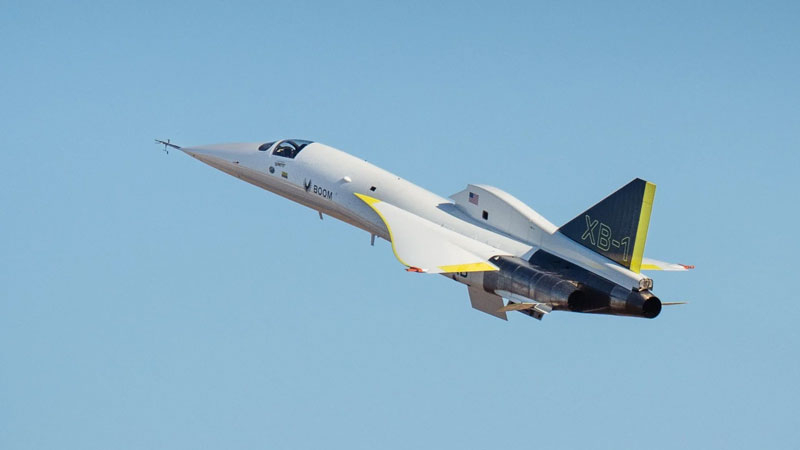On February 10, Boom Supersonic conducted another test of the XB-1 supersonic aircraft prototype. It broke the sound barrier three times without the usual sonic boom. This phenomenon is usually observed at speeds of 1.1–1.3 Mach and was once the reason for banning flights of civilian supersonic aircraft over the territory of the United States. The developers of the XB-1 managed to eliminate this effect, which opens up prospects for the revival of civilian supersonic flights.

Image Source: Boom Supersonic
Flight testing of the XB-1 began in March 2024, and the aircraft first broke the sound barrier in January 2025. The developer gradually increased the load on the aircraft, evaluating the effect of aerodynamics on its design. The flight on February 10 was the second in which the XB-1 broke Mach 1. This time, microphones were installed on the ground to record the noise when breaking the sound barrier. None of the microphones recorded a sonic boom, despite the fact that the XB-1 broke the sound barrier three times.
«”We’ve broken the sound barrier not once, not twice, but three times — and each time without an audible sonic boom,” said Boom CEO Blake Scholl. “It’s about how you fly the airplane.”
This point requires clarification. The plane did produce a sonic boom, but it was not heard on the ground due to special atmospheric conditions. Back in 2012, the US military found out during F-18 tests that certain temperature and pressure differences in the atmosphere create ascending air currents that create a cutoff barrier. This air layer reflects the sound of the sonic boom upward, preventing it from spreading to the ground.
The challenge for the XB-1 and future supersonic passenger jet designers is to ensure that the aircraft’s onboard equipment can detect these phenomena and only allow the aircraft to break the sound barrier at the optimum altitude. Boom Supersonic calls this mode “boomless cruise.”

The civilian Overture (designed for 64 passengers) is expected to use boomless cruise when it reaches an altitude of 33,000 feet, breaking the sound barrier without making audible noise on the ground. However, it will still be louder than conventional subsonic aircraft. That is why in recent years scientists, engineers and entrepreneurs have been asking the US Federal Aviation Administration (FAA) to reconsider the noise pollution standards in the skies above America. They propose not to ban civilian supersonic flight, but to define acceptable noise levels.
Overture will fly at Mach 1.7, which will almost halve the flight time, which is especially important for long-haul routes. The XB-1 prototype has already proven its ability to fly in “silent” mode even when breaking the sound barrier. The passenger Overture will inherit these technologies.
Boom Supersonic is currently finalizing the Overture and expects to have its engines (being built by a consortium of industry companies) completed by March 2025. The first Overture prototype is scheduled to begin assembly in 18 months, with production expected to be completed within three years.